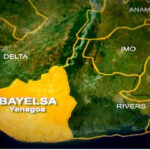Last week, we brought out what value, cost and price are. Today we will begin to discuss some costing methods.
Profitability and wealth creation through value addition are two core objectives of businesses. The value you provide is what makes your customers happy, thereby making them want to buy more from you as well as make referrals to you. For the customer to be happy, the price they willingly pay must be worth less than the value they perceive to receive. For the business to be successful, the cost of providing value to the customers must be less than the price the business asks, except in some exceptional situations.
Profitability and wealth creation are described by two simple equations. The first equation is that ‘Total Sales (‘TS’) minus Total Costs (‘TC’) equals Profit (‘TP’)’. Mathematically, we can write that as, TS – TC = TP. The second equation is that ‘Total Assets (‘TA’) equals owners’ Equity (‘EQ’) plus total Other Liabilities (‘LB’)’. Mathematically, that can be written as, TA = EQ + LB.
Wealth creation over time, as revealed by the second equation, is a function of profitability, which increases owners’ equity and therefore the total assets of the business assuming that liabilities do not grow at a faster rate. The profitability of an operation, as revealed in the first equation, is a function of the price of a unit of each product we sell, the volume of each product we have sold and the total cost of providing the product(s).
Clearly, it is necessary that an entrepreneur be able to keep a tab on the profitability of their business operation by always establishing and monitoring what their costs are vis-à-vis their sales. But industries and businesses differ in their nature as well as in the processes involved in producing their goods and services. In fact, even in the same business, situations may warrant that different transactions are costed differently.
Costing methods: Last week, we brought out and defined two major cost categories viz, direct and indirect costs. In addition, costs can also be classified as variable or fixed. There are also certain costs that fall somewhere between those two ends of the spectrum and are called semi-variable, semi-fixed or mixed costs. Basically, variable costs are those cost components that change in tandem with how much a company produces and sells. This means that variable costs increase or decrease as output increases or decreases respectively. On the other hand, fixed costs are those costs that remain reasonably the same regardless of output. These costs may include rent, insurance, depreciation, some type of labour costs, etc. Direct costs are typically variable while indirect tend to be fixed. A semi-variable cost has both fixed and variable components.
Costing methods refer to a system of ascertaining and accounting for costs in any type of operation. There are several costing methods such as Batch Costing, Unit Costing, Service Costing, Composite Costing, etc. For our purposes, we will consider two basic, yet widely applicable, methods known as ‘job costing’ and ‘process costing’.
Job Costing is defined by ICMA as “that form of specific order costing which applies where work is undertaken to customers’ ‘special requirements’”. (Specific Order Costing is defined by the same Institute as “the category of basic costing methods applicable where work consists of separate contracts, jobs, or batches each of which is authorised by a special order or contract.”) In job costing, the costs of each job, from initiation to completion and delivery, are ascertained and accumulated separately thereby making it possible to establish the profit or loss on each job.
The objective of job costing method is to ensure that all costs are allocated appropriately and captured under the various categories discussed earlier viz, material costs, labour costs, and overheads. Businesses that apply job costing method tend to be those that carry out production based on customer specifications. They include heavy industries like shipbuilding, heavy machine foundry, etc. and also basic services like automobile repair garage, printing press, etc.
The documents needed for job costing include the job order which authorises the production department to produce the item(s) that constitute the job; A Job card, cost sheet or worksheet in which all the costs incurred in the various stages of the production are captured. In addition, there are likely to be other relevant supporting documents such as material requisition slips, time tickets, etc. which provide input and details for the worksheet.
The materials costs will cover all the materials used. Subject to internal policy, abnormal material loss, if any, is also charged directly. But scrap costs are generally charged to overhead cost pool which is allocated later. For the labour costs, direct labour is traced and charged to specific jobs whilst indirect labour is charged to overhead cost pool and then allocated to various open jobs depending on measure of cost usage. Overhead costs are accumulated into one or more overhead cost pools from whence they are allocated to open jobs, and like indirect labour, based on the measure of cost usage. Historical costs and time on the job are usually good guide and basis for overhead cost allocations.
Next week, we will take up processing costing.

 Join Daily Trust WhatsApp Community For Quick Access To News and Happenings Around You.
Join Daily Trust WhatsApp Community For Quick Access To News and Happenings Around You.


